Uptown, downtown, all around the town. Manhattan’s new restaurants, as designed as they are delicious, are ushering in a new era of refined dining.
METROPOLIS BY MARCUS SAMUELSSON
The ceiling is the star at Metropolis by Marcus Samuelsson. “In most buildings, the floor is the welcome mat,” says acclaimed restaurant designer David Rockwell. “But coming up the stairs, the ceiling becomes almost like an embrace and leads you through the space.”
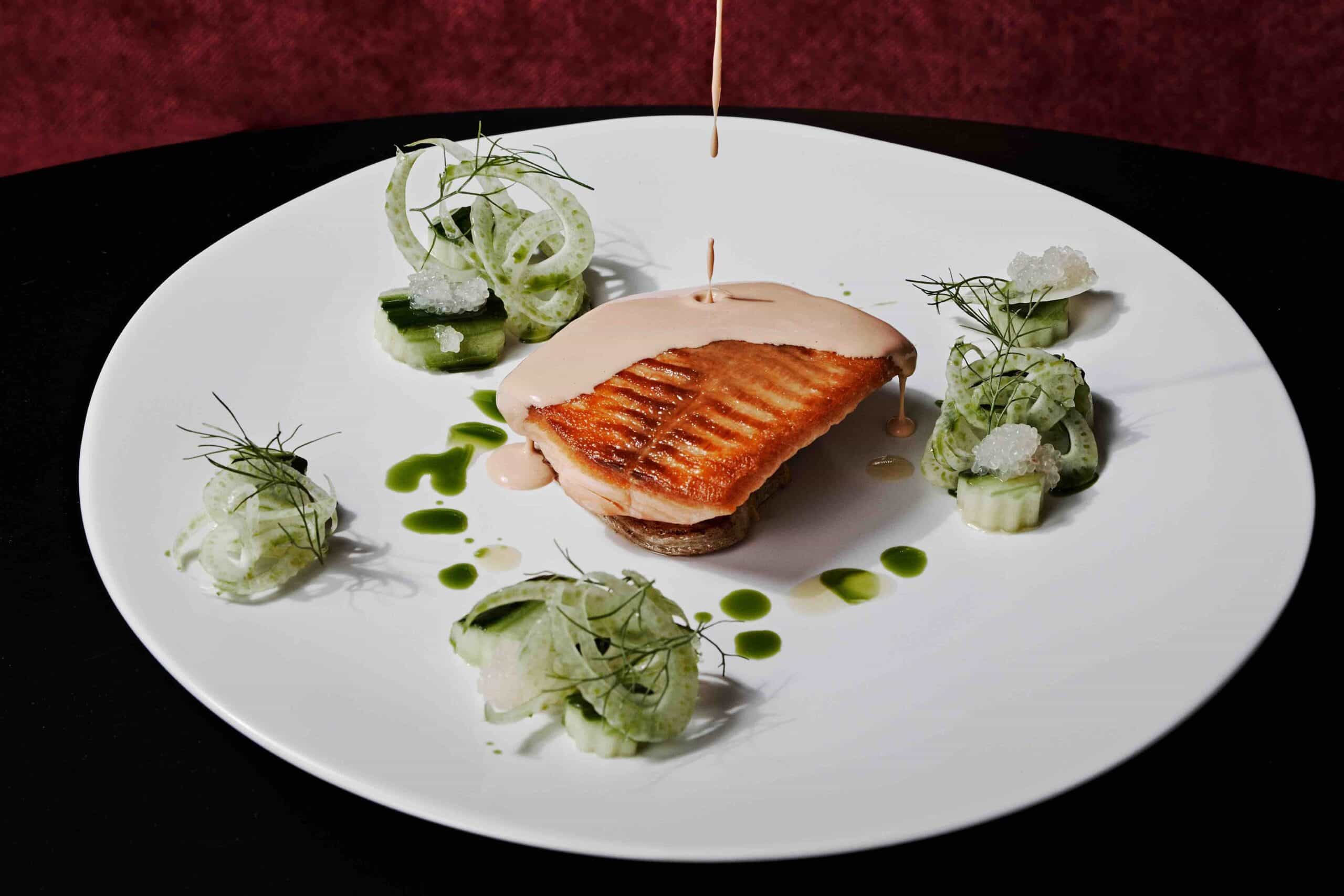
Visitors enter the underside of the Perelman Performing Arts Center (PAC) 8-story marble cube up a grand staircase and are guided through the lobby and restaurant by Rockwell’s spectacular glowing ceiling in undulating Sapele wood (African mahogany) ribbons with integrated LED lighting.
The restaurant has no interior walls. The ceiling has places where the ribs drop down and create abstract chandeliers separating spaces such as a small performance stage, the bar, and the lounge. “Below that,” explains Rockwell, “the seating is broken up into smaller groups with banquettes with the goal of having many places for people to gather. This isn’t one big giant open room. The restaurant has 130 seats but doesn’t feel that way because the seating groups become rooms within rooms.”
The ceiling is designed to be more than aesthetic. Above the Sapele timbers is perforated metal with acoustical absorption. Unlike many fashionable New York spots, “You can have a conversation and actually talk to your guests,” says Rockwell.
Because the $550 million PAC is the final edifice to be erected on the World Trade Center site 22 years after the tragic events of 9/11, it’s regarded as a symbol that New York is back.
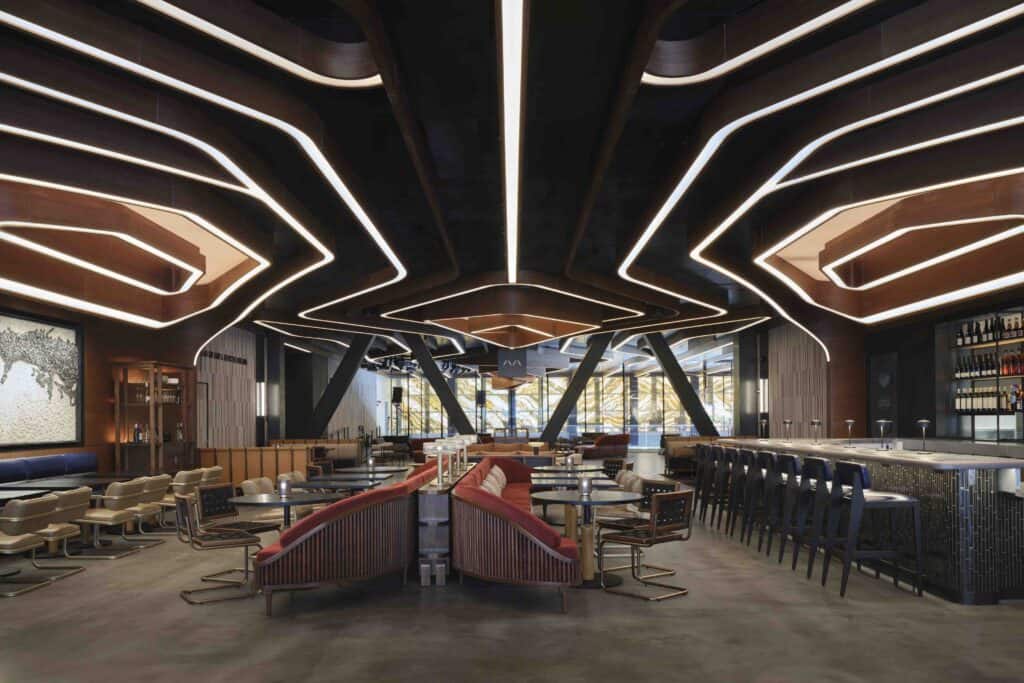
Rockwell explains that it was a particular challenge “to create a place with a sense of occasion that the building merited.” He lived in TriBeCa when the towers fell and has been involved in redeveloping the World Trade Center site “from day one.”
“I think they knew my two great loves were theater and hospitality,” he says. Rockwell’s resume includes numerous restaurants such as Zaytinya, Nobu, and Wayan, as well as Broadway sets for such musicals as She Loves Me. He called in from Chicago, where he was working on set designs for Boop! The musical.
Likewise, chef/restaurateur Marcus Samuelsson says he considers it “a huge privilege and honor to be part of the cultural center. Because of where it’s located and the history, we want to make a restaurant inspired by the city.” Samuelsson had cooked at Windows on the World shortly before 9/11 and was involved in feeding first responders. “This is coming full circle.”
Samuelsson has been in the city for 25 years and feels like a true New Yorker. He has been “chasing flavors” here since 1994, when he first arrived at the high-end Scandinavian restaurant Aquavit and became the youngest chef to receive three stars from The New York Times at the age of 24. The diversity of race and culture was both thrilling and comforting for the Ethiopian Swedish chef. He has said that New York was the first place he truly felt at home. The multitude of flavors he chased are an inspiration for the Metropolis menu.
When looking for his executive chef “it was about creating a New York restaurant with someone who had ties to New York,” Samuelsson says. Fortunately, executive chef Ed Tinoco, a Queens native who spent a decade as culinary director of the highly acclaimed Alinea in Chicago, was looking to come home.
Together, they are collaborating on a menu that pays homage to the city’s incredible diversity of immigrants.
A popular snack is fried olives with everything seasoning. “We were thinking through a bagel and what comes on top of it,” explains Samuelsson. Flushing-style oysters are served with XO sauce. “It’s the XO sauce inspired by that community,” says Samuelsson, “there are a lot of Chinese notes to that sauce.” The lamb trio, neck, sausage, and tenderloin, nods to the West African community in Harlem and the Bronx.
Cafe Carmellini
Step into Café Carmellini and you could be stepping into the Gilded Age. Magnificent chandeliers hung from double height ceilings, white tablecloths, uniformed waiters. This is what nice restaurants used to look like. The 5,000-square-foot restaurant is located on the ground floor of the new Fifth Avenue Hotel, which was originally designed in 1907 by the renowned New York architects McKim Mead and White who built the Morgan Library and the Brooklyn Museum. The elegant restaurant was once the mansion of a prominent socialite.
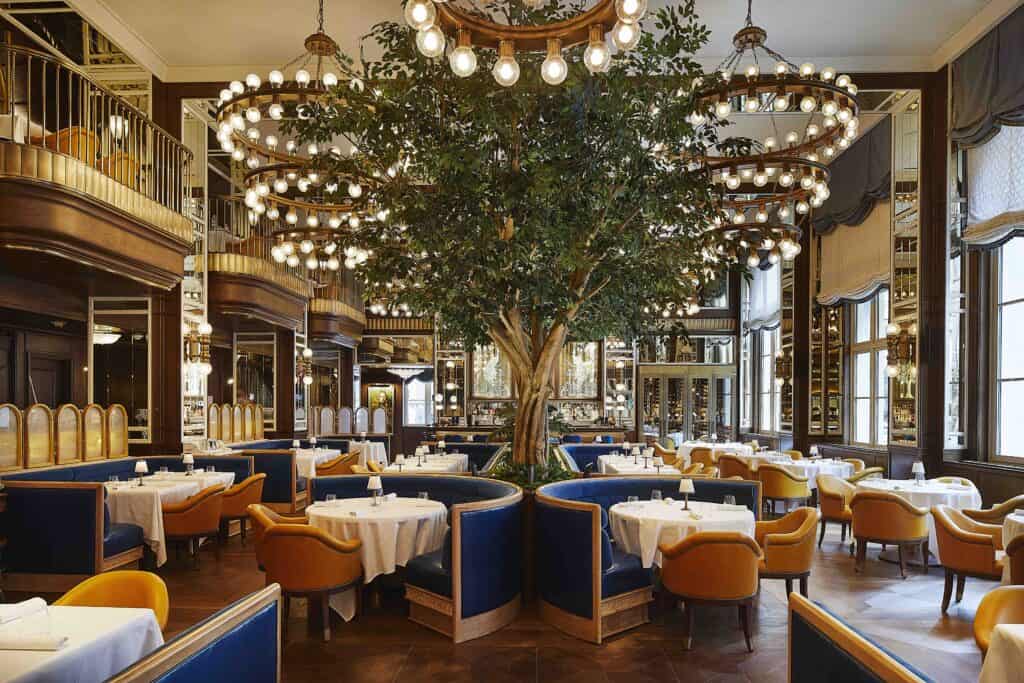
Swedish designer Martin Brudnizki underlines the breath-taking height of the cleanings by planting two sculptural trees in the middle of the dining room. Guests sit comfortably in blue velvet booths surrounded by rich wood paneling and beveled mirror panels which reflect the golden glow of orb lighting. Balcony seating provides a bird’s eye view of the main dining room.
The refined atmosphere is befitting for Carmellini’s return to fine dining. “Café Carmellini is my love letter to New York City. I want it to become a destination for New Yorkers and visitors to the city to feel transported, celebrated and warmly welcomed,” says the chef who has spent the past 30 years cooking in the city at highly acclaimed, although more casual restaurants, such as Locanda Verde. Here guests will feast on Lobster Cannelloni & Osetra, Red Snapper ‘Meunière,’ Rabbit Cacciatore, and Duck Tortellini.
Café Boulud
The beloved Café Boulud reopened in December much to the delight of its many fans who were mourning its demise last May. The new location at 100 East 63rd Street is much closer to the newly reinvigorated midtown restaurant scene. It reopened in partnership with the hospitality division of BARNES International Realty.
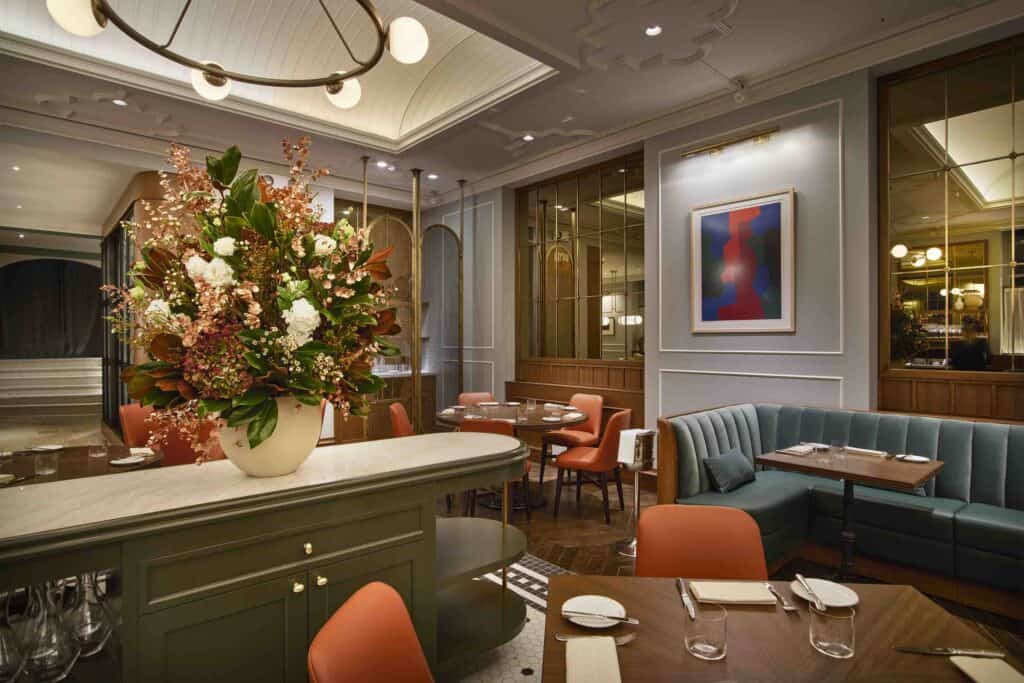
The stylish space designed by Jeffrey Beers International features Art Deco and vintage accents throughout. Diners will be comfortably ensconced on velvet green banquets under vaulted ceilings. The black and white tile and varnished wood flooring is original as is the decorative clover shaped molding. Mirrored panels, sculpted bronze, gilded copper, and polished stone add additional accents. The restaurant also features a selection of works by famous European artists curated by Galerie Murlot.
The elegant space may even signal a return of a dress code of sorts. The website states “business casual attire is strongly recommended. Athletic or leisure wear is not permitted, and gentlemen are not permitted to wear shorts or sandals in the dining room.”
The original Café Boulud, for which the New York café is named, was opened by Boulud’s grandparents over 100 years ago outside of his hometown, Lyon, France. Boulud opened Café Boulud in New York City in 1998 and has since expanded the brand to locations in Palm Beach, the Bahamas, and Toronto, with a new Beverly Hills location expected to open next year.
“Creating a new home for Café Boulud has been my focus and priority for the last year,” says Boulud, alluding to the special place this restaurant holds in his heart. “The restaurant will be a vibrant celebration of my French roots and love for New York.”
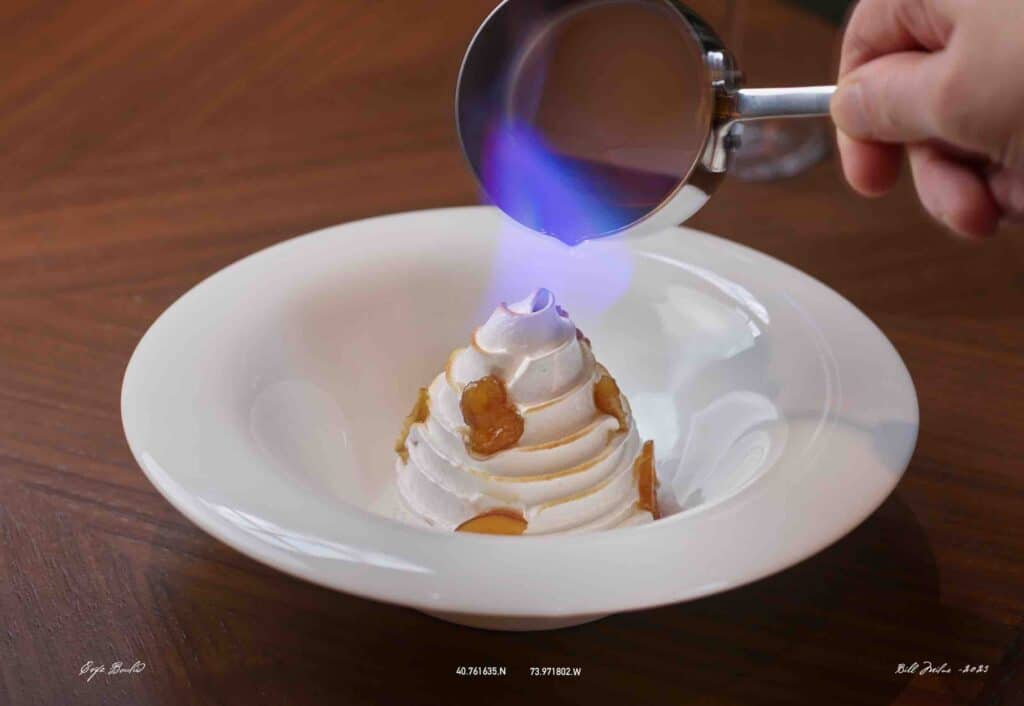
What’s to eat? Will the signature black bass in crisp potato crust (Daniel’s upmarket riff on fish and chips) be on the menu? You batcha! It will be in the traditional section along with a glazed sweetbread with ginger jus. A rotating seasonal section will change with offerings such as grilled salmon with citrus and roasted Pennsylvania duck with persimmon jam. A curried rainbow carrot tart with shallot compote will star in the vegetarian section. Thai dishes such as a peekytoe crab soup with pickled ginger flower and a roasted pork tenderloin with pork belly, sweet potato and kale will open a global section called Le Voyage. Executive chef Romain Paumier rides the range. He was most recently sous chef at Restaurant Daniel and prior to that sous chef at the previous location of Café Boulud.
Executive pastry chef Katalina Diaz, also a Restaurant Daniel alum, will turn out classics such as a molten chocolate cake with salted caramel and mint lemongrass ice cream and a “baked” Mont Blanc with chestnut ice cream, ginger sorbet, and Swiss meringue.
Four Twenty-Five by Jean-Georges
An architectural masterpiece is the perfect showcase for Jean-Georges Vongerichten’s award-winning cuisine at 425 Park Avenue, the first full-block office building on New York’s grand boulevard in over 50 years. Designed by Pritzker laureate Lord Norman Foster, the 47-story building takes its place as an urban icon nearby the Seagram Building by Mies van der Rohe and Lever House by Gordon Bunshaft. The message here: Midtown is back!
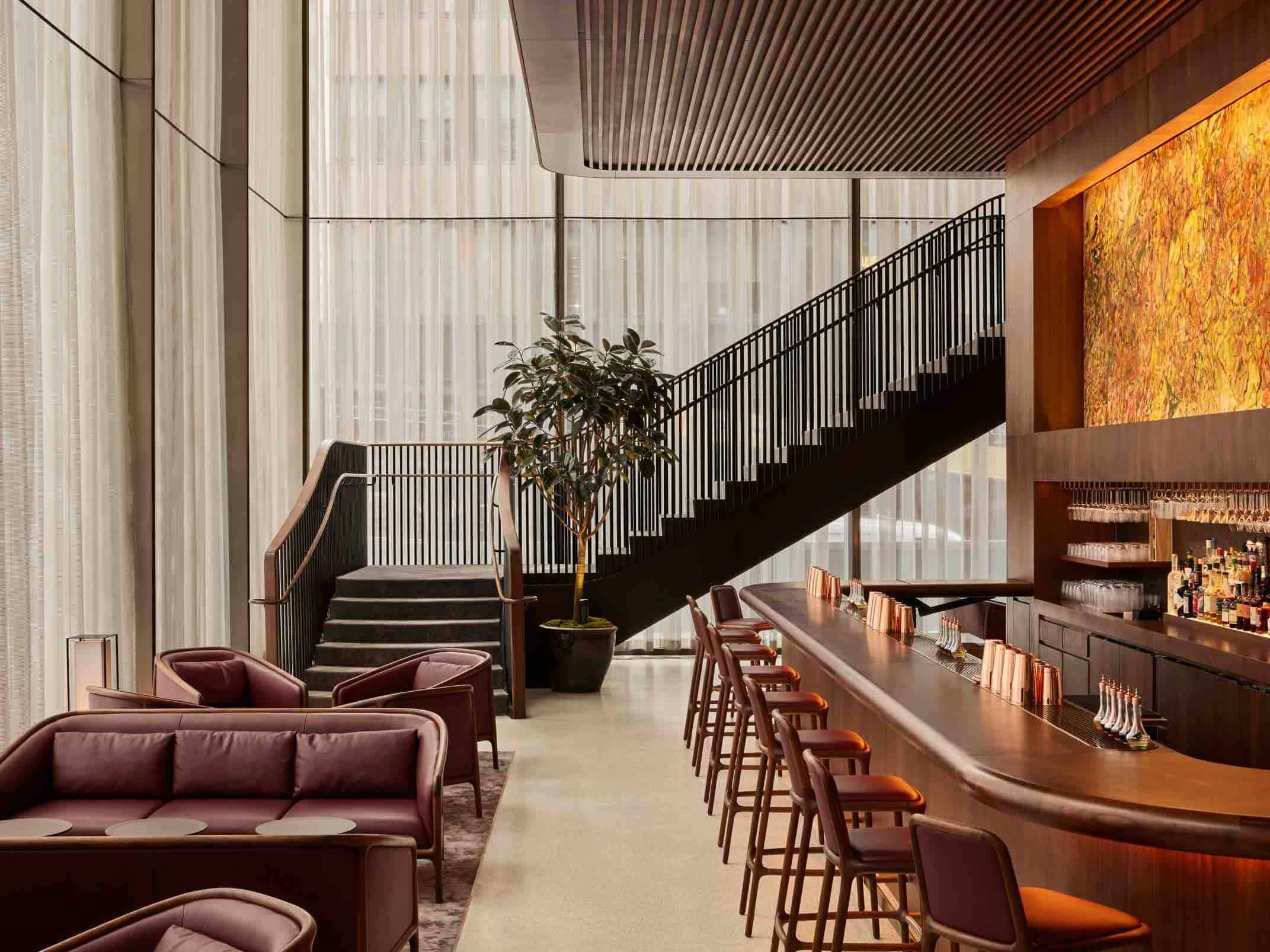
The restaurant occupies the first two stories of the tower. Diners enter through the cocktail lounge with awe inspiring 45-foot ceilings on the first floor and ascend a sweeping staircase to the mezzanine dining level. The 80-seat dining level features a glass fronted kitchen showing the chefs at work. The timber-paneled dining area cantilevers over the lounge creating a more intimate environment at the bar. A 24-foot painting by the celebrated American artist Larry Poons animates the wall behind. A bespoke collection of furniture designed by Foster + Partners is made in walnut and burgundy leather.
This has been called a full circle moment for Vongerichten who began his New York career at Lafayette in the now demolished Drake Hotel diagonally across Park Avenue in 1986 and received four stars from The New York Times in short order. He made waves by abandoning traditional meat stocks and creams, relying instead on the brighter flavors from vegetable juices, fruits, light broths and herbal vinaigrettes. The young Alsatian native who had trained with such esteemed chefs as Paul Bocuse, Paul Haeberlin, and Louis Outhier was soon one of the chefs driving the American Food Revolution and now has 62 restaurants worldwide. At 425, he will rely on veteran chef Jonathan Benno, an alum of Per Se and Lincoln, to execute a menu befitting the grand space.
Dinner could start with a chicory salad with persimmons, squid and octopus a la plancha, or sauteed langoustines in their shell. Mains continue with steamed black bass and winter mushrooms, organic chicken breast with black truffle crumbs, and charred duck breast with roasted Caraflex cabbage. Desserts will include Honey Crisp apple spiral, dark chocolate mouse and caramel custard.
Beverly Stephen writes about design, food, travel, and lifestyle. She is co-owner of Flavor Forays, a culinary travel company.










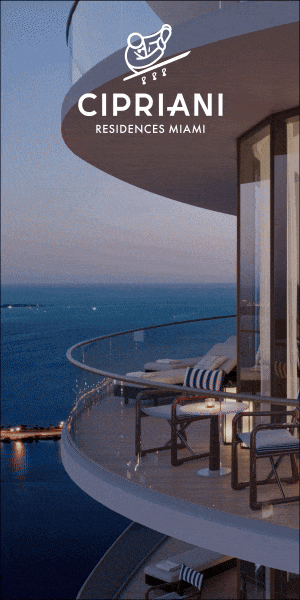
![Next weekend, the Hamptons International Film Festival returns with a powerful slate of films, global premieres, and community connection. 🎬 From narrative dramas to groundbreaking documentaries, this East End tradition brings the art of cinema to life in unforgettable ways. [link in bio]](https://hamptonsrealestateshowcase.com/wp-content/uploads/sb-instagram-feed-images/553311384_18536395384030135_7815196520249715018_nfull.webp)




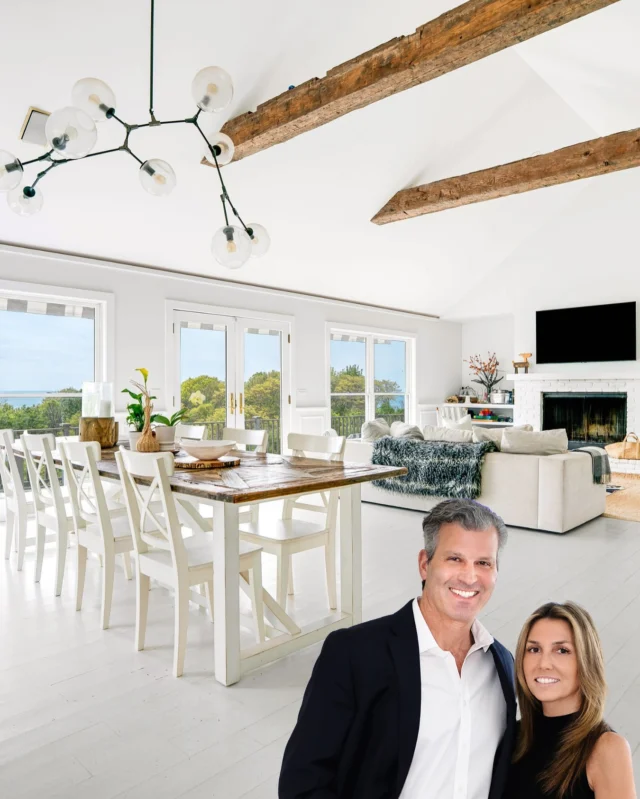
![Picnic season isn’t over just yet. From crisp whites to collapsible tables, a few well-chosen essentials can turn any outdoor moment into something special. We’ve curated a list of favorites to help you make the most of every last warm day. [link in bio]](https://hamptonsrealestateshowcase.com/wp-content/uploads/sb-instagram-feed-images/550776784_18534662161030135_2052866662940107332_nfull.webp)
![Seaside gardens are more than just beautiful, they’re built to endure. With the right plants, structure, and intention, coastal landscapes can thrive in even the toughest conditions. Designers share how to blend aesthetics with resilience for a garden that’s both striking and sustainable. [link in bio]](https://hamptonsrealestateshowcase.com/wp-content/uploads/sb-instagram-feed-images/552039742_18534454579030135_6181491184247772098_nfull.webp)
